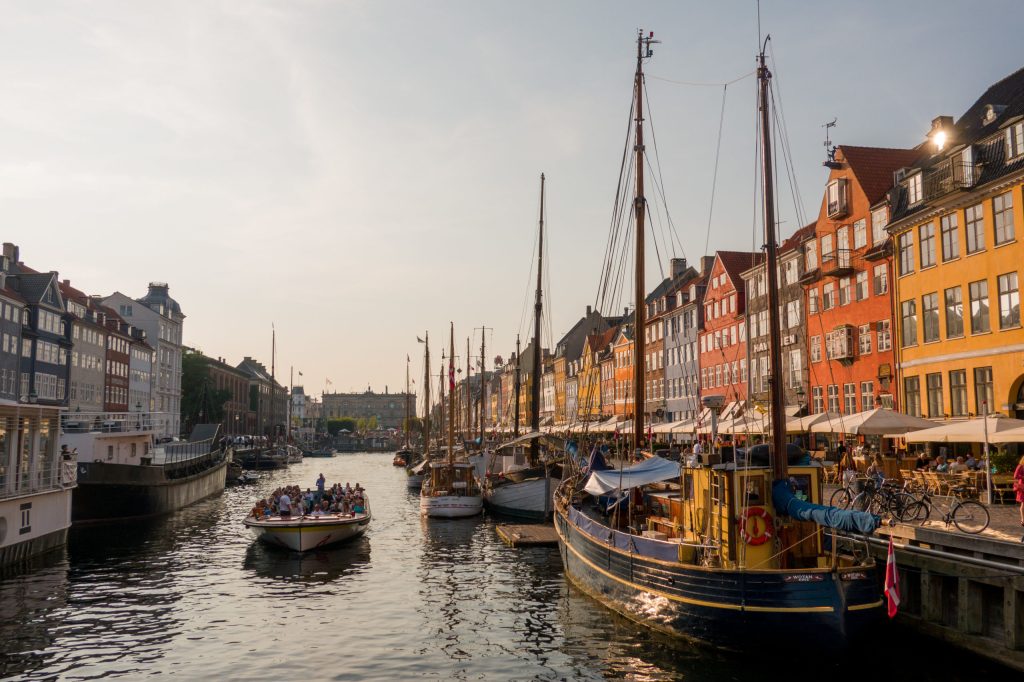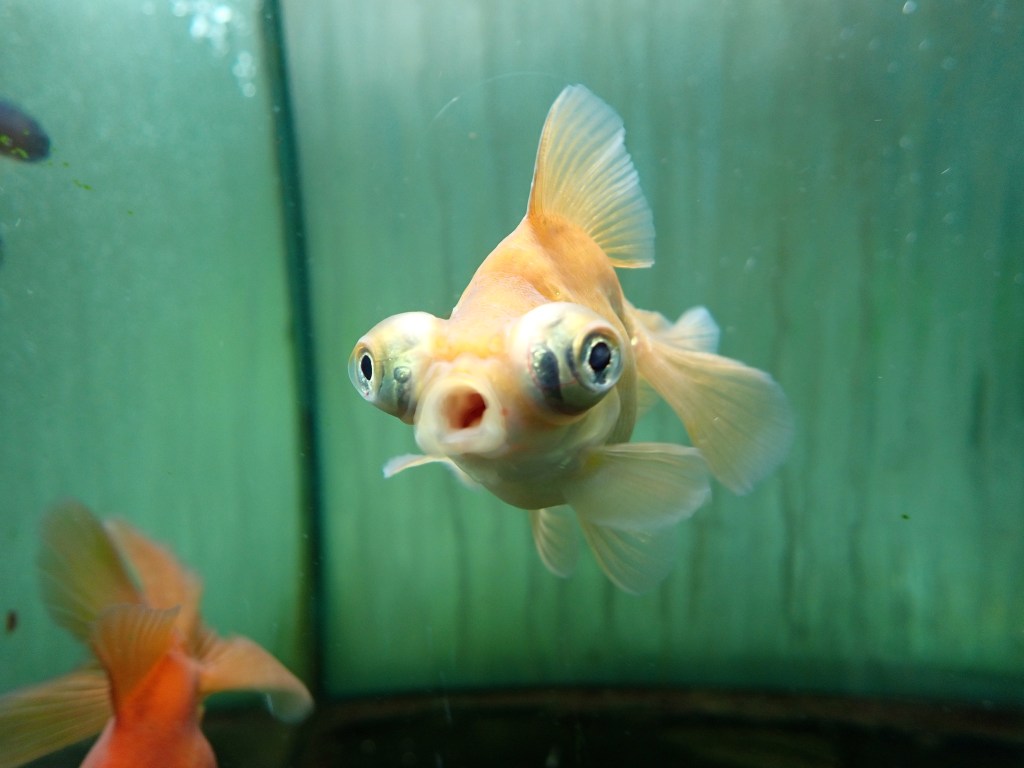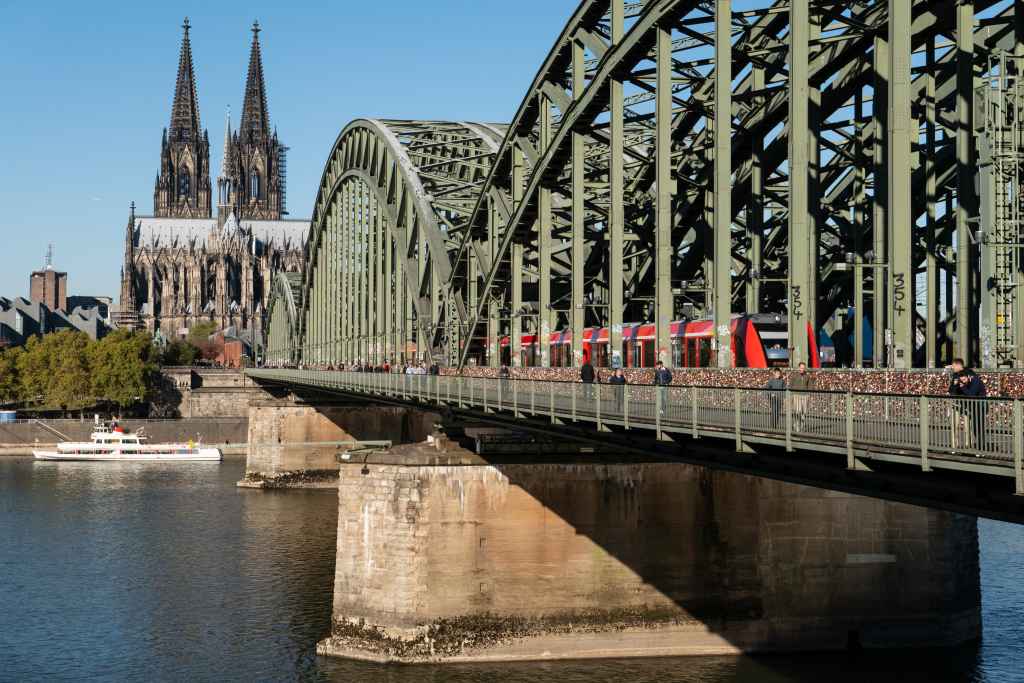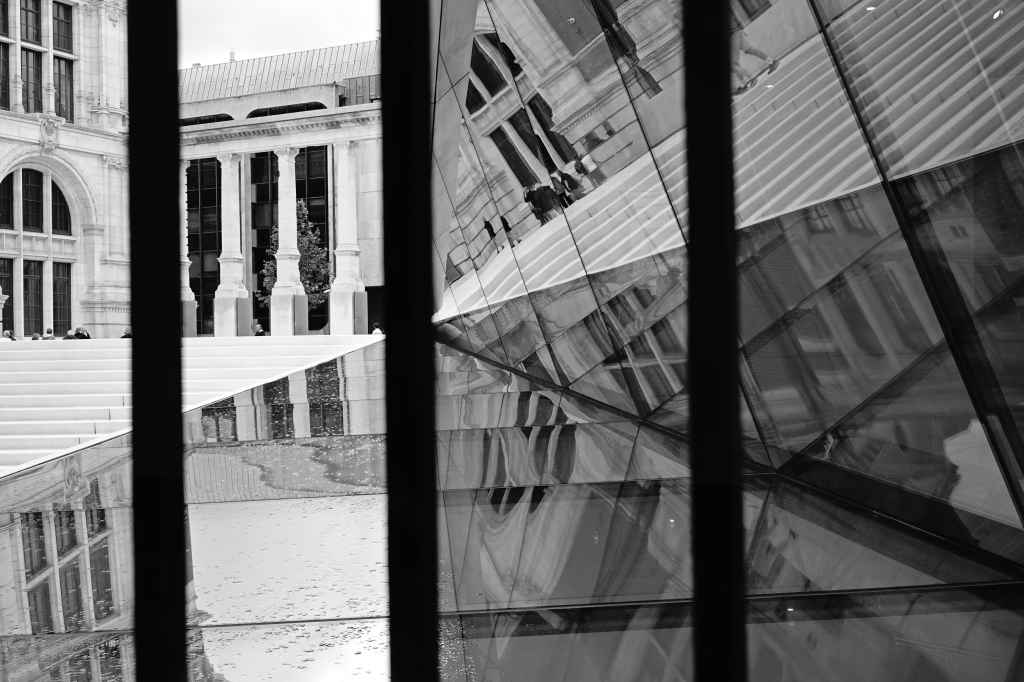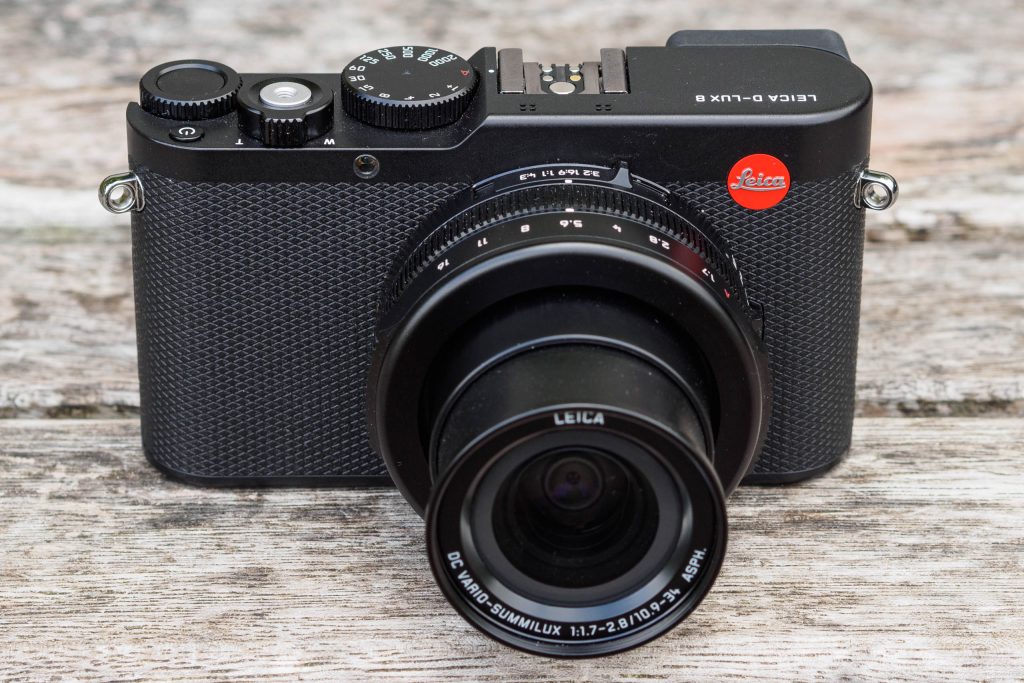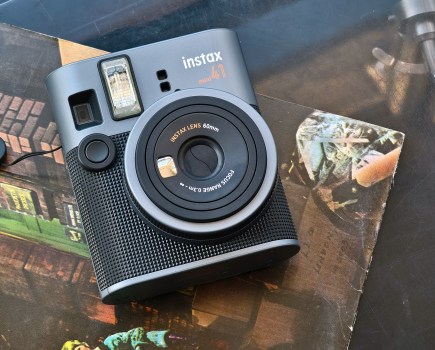The best compact cameras deliver excellent image quality from a single, convenient unit. A compact camera has a fixed lens, unlike DSLRs and mirrorless cameras with their interchangeable lens mounts. Whether it’s a long zoom, a larger sensor or a full suite of manual controls, these compact cameras offer things that even the best phone cameras physically cannot.
At the highest level they can produce images on a par with the best mirrorless or DSLR cameras. The lens with the camera is the only one you can use – limited in one sense, yes, but a convenient, all-in-one quality photographic package in another.
At AP we review all the major compact cameras that come out, and the models on this list are ones that we reckon offer a genuine, tangible advantage over shooting on a phone.
For this guide, our reviewers have focused on smaller, travel-friendly compacts that deliver excellent value for money, including both cheap point and shoot cameras, and premium options. Some of the most popular cameras in recent years have fitted this category, such as the stylishly retro-looking Fujifilm X100VI. We’ve mostly left out big superzoom bridge cameras as they are more a category of their own — if this is what you’re looking for, check out our guide to the best ultra zoom cameras.
The best compact cameras: our quick list
- Best high-resolution compact camera: Fujifilm X100VI – Buy now
- Best compact for action: Sony Cyber-shot RX100 VII – Buy now
- Best retro compact camera: Fujifilm X100V – Buy now
- Best pocket camera: Ricoh GR IIIx – Buy now
- Best premium compact: Leica Q3 – Buy now
- Best waterproof camera: Olympus/OM System Tough TG-7 – Buy now
- Best for YouTube and streaming: Canon PowerShot G7 X Mark III – Buy now
- Best compact for low light: Panasonic Lumix LX100 II – Buy now
- Best premium travel compact: Sony Cyber-shot RX100 VI – Buy now
- Best compact zoom: Leica D-Lux 8 – Buy now
- Best used travel zoom: Panasonic Lumix TZ90 / ZS70 – Buy now
- Best all-rounder: Panasonic Lumix TZ100 / ZS100* – Buy now
- Best compact for video and vlogging: Sony ZV-1 – Buy now
- Best budget camera under $100: Kodak PixPro FZ45 – Buy now
Looking for the best deal on compact cameras? Not only will you find the best compact cameras, but also some of the best compact camera deals, as our ‘Buy now’ buttons are set to automatically take you to the best prices from trusted retailers. You’ll also find a list of other retailers below each camera, so you can find the right deal for you.
* Scarcely available at the time of publishing
In this unmissable buyer’s guide, we take a closer look at some of the best compact cameras that you can currently buy and give our expert recommendations about what each one is best for…
Why you can trust Amateur Photographer
We spend many hours testing every product we recommend, in detail, in a variety of situations and shooting scenarios, and only use experts for our reviews, so you can be sure that you’re getting the best products. Find out more about our expert writers.
BEST COMPACT CAMERA
Best compact camera: Fujifilm X100VI
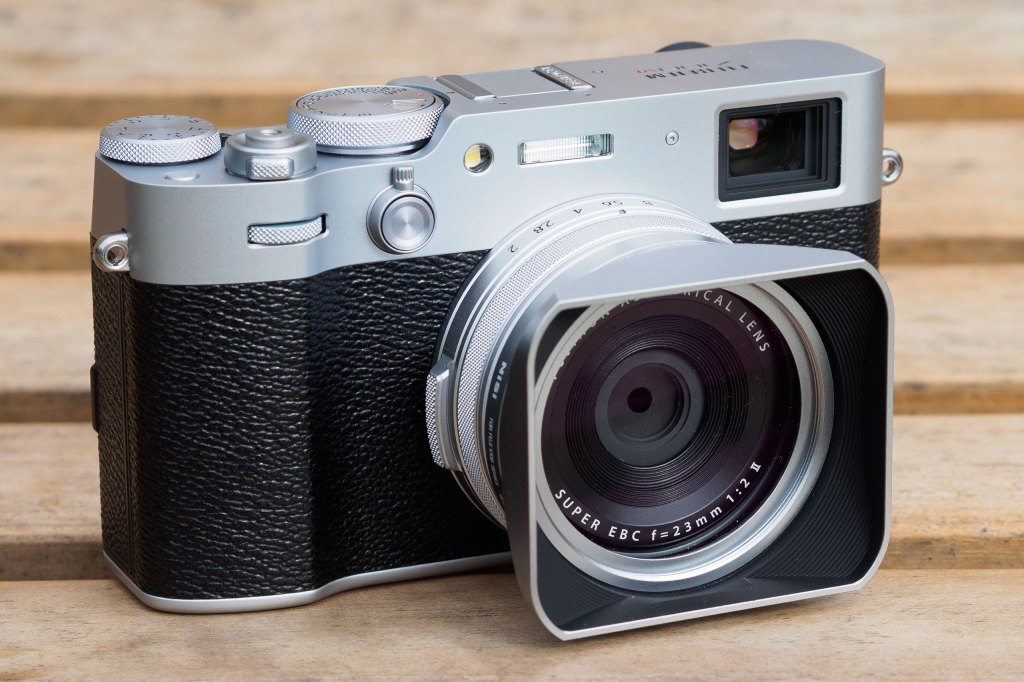
Amateur Photographer verdict
The Fujifilm X100VI updates the cult-like X100V in a number of useful ways, with a new 40MP sensor, in-body image stabilisation, and improved AF. This camera is sure to be a huge success.- In-body image stabilisation
- Detailed crisp images
- Unique design and handling
- One-of-a-kind viewfinder
- 6.2K video recording
- Fixed lens will not be for everyone
- Full weather-sealing costs extra
Specifications at a glance:
| Camera type | Mirrorless (X-mount) |
| Lens | Fixed 35mm equivalent f/2 |
| Sensor | 440.2MP APS-C X-Trans CMOS 5 HR |
| Continuous shooting | 15 fps |
| ISO | ISO 64-51,200 extended |
| Video | 66.2K 30p, 4K 60p, and 1080 240p |
| Image stabilisation | In-Body – 6 stops (5-axis) |
The Fujifilm X100VI continues to break sales records and can be elusive to buyers as the company struggles to keep up with demand. One can see why: the X100VI is indeed a very capable and well-featured camera. It boasts the highest resolution sensor on our list with 40.2MP, as well as 5-axis In-body image stabilisation. While reviewing, we found that this allows sharp hand-held shots with shutter speeds as slow as 1/8s and 1/4s.
The fixed 35mm equivalent f/2 lens lets you focus on objects as close as 10 cm and creates a pleasing bokeh effect- all the while resolving an impressive level of detail across the entire frame. With the high resolution sensor you can use 1.4x and 2.0x digital teleconverters and still get decent resolution images that are downsized to 20MP or 10MP.
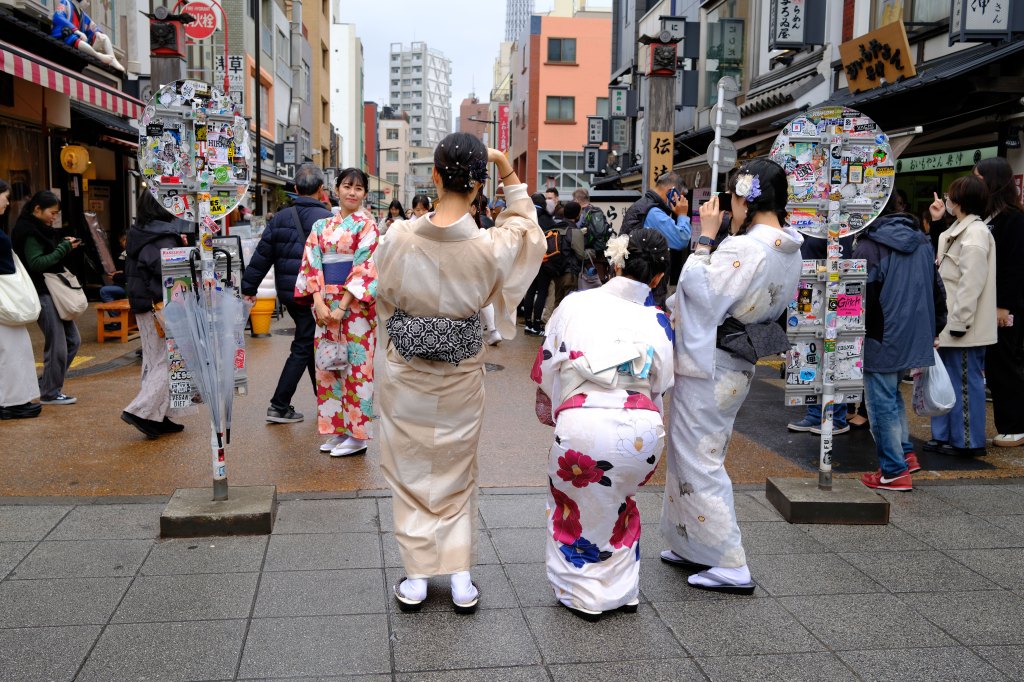
The small body has a retro design similar to its predecessor the X100V (now discontinued), and has the same sensor and processor as the X-T5. With the X-Processor 5, you get subject recognition autofocus and tracking, with birds, planes, and automobiles all being detected. There’s also human face and eye detection, but this unfortunately, is in a separate menu setting.
The film simulation modes made the X100-series so special in the first place, so Fujifim’s appealing feature has been added to this latest model too, with the new addition REALA ICE mode now it has 20 distinct options in total.
Read our full review of the Fujifilm X100VI here.
BEST FOR ACTION
Best compact for action: Sony Cyber-shot RX100 VII

Amateur Photographer verdict
A phenomenally capable pocket camera for those who can afford it and live with its flaws – incredible tech in a flawed body design at an eye-watering price.- Excellent zoom range
- High-speed 24fps shooting
- Pop-up viewfinder
- Very expensive
Specifications at a glance:
| Lens | 24-200mm (35mm equivalent) f/2.8-f/4.5 |
| Sensor | 20MP 1″ Exmor RS CMOS sensor |
| Screen | 3-inch tilting LCD touchscreen |
| Continuous shooting | 20fps shooting |
| ISO | ISO 100-12,800 |
| Video | 4k30p |
The ultimate offering in portability and overall image quality has to be the Sony RX100 VII. Sony’s RX100 range is what introduced the one-inch sensor to the market, and the camera which others tend to follow. We’re now in the seventh generation from the original camera, and the tech which is packed into this miniature marvel is quite something.
Not only do you have a one-inch sensor, you get a 24-200mm (35mm equivalent) lens which offers an f/2.8-f/4.5 maximum aperture. High-speed shooting is available – pretty incredible for a pocket camera – you can shoot at 24fps. The autofocus system is also pretty impressive, so you could conceivably use this camera to shoot sports and action.
Other exciting features include 4K video, wi-fi and a tilting LCD touchscreen. You also get a cleverly hidden electronic viewfinder which pops out from the corner of the camera.
So, what’s the drawback? Well – it’s the price. You need to pay top whack to get all of these features in such a small package, and the RX100 VII currently retails for around £1,000. That’s a heck of a lot of money to spend on a compact camera, but you do get something seriously impressive for your cash. If you don’t have those kind of readies available, take a look at some of the older RX100 models – we have included one option a little later in this guide.
Read our Sony Cyber-shot RX100 VII Review
BEST RETRO COMPACT
Best retro compact camera: Fujifilm X100V

Amateur Photographer verdict
The ultimate fixed-lens compact, the Fujifilm X100v is as satisfying to look at as it is to shoot with. Outstanding images are the result.- Gorgeous image quality
- A pleasure to use
- Stylish looks
- Compatible with legacy conversion lenses
- Expensive
- Difficult to find
Specifications at a glance:
| Lens | 23mm F2.0 (35mm equivalent) |
| Sensor | 26.1MP APS-C X-Trans CMOS 4 |
| Continuous shooting | 20fps shooting |
| ISO | ISO 100-12,800 |
| Viewfinder | Hybrid (OVF&EVF) |
| Touchscreen | 3-inch, 1.62-million-dot, two-way tilting |
| Video | 4k at 30fps |
The Fujifilm X100V isn’t just a good-looking camera, it also takes excellent photos thank to a 26MP APS-C X-Trans CMOS sensor, and an updated lens design improves macro performance. The lens on the front is a 23mm f/2.0 prime lens, giving a 35mm equivalent (in 35mm terms).
You’ll also find Fujifilm’s latest Film Simulation modes, with a number of black and white film options, including ACROS, as well as the option to add a film-like grain effect to images, great for those gritty black and white street photographs.
There’s a hybrid optical/electronic viewfinder that can give you the best of both worlds, and give you the true rangefinder camera experience. The touchscreen on the back tilts which can help with awkward angles, or when you want to ‘shoot from the hip’.
If you’re interested in recording video, then you’ll find the camera has 4K video recording at 30fps, although the lack of image stabilisation may be a deal-breaker for some. The X100V is a gorgeous little camera that’s as satisfying to look at as it is to shoot with. Altogether, this camera simply compels you to venture out and take pictures; it’s very easy to carry, gorgeous to use and produces great images.
- If you can’t find the Fujifilm X100V, check out our guide to Fujifilm X100V alternatives.
Read our Fujifilm X100V Review
BEST POCKET CAMERA
Best pocket camera: Ricoh GR IIIx
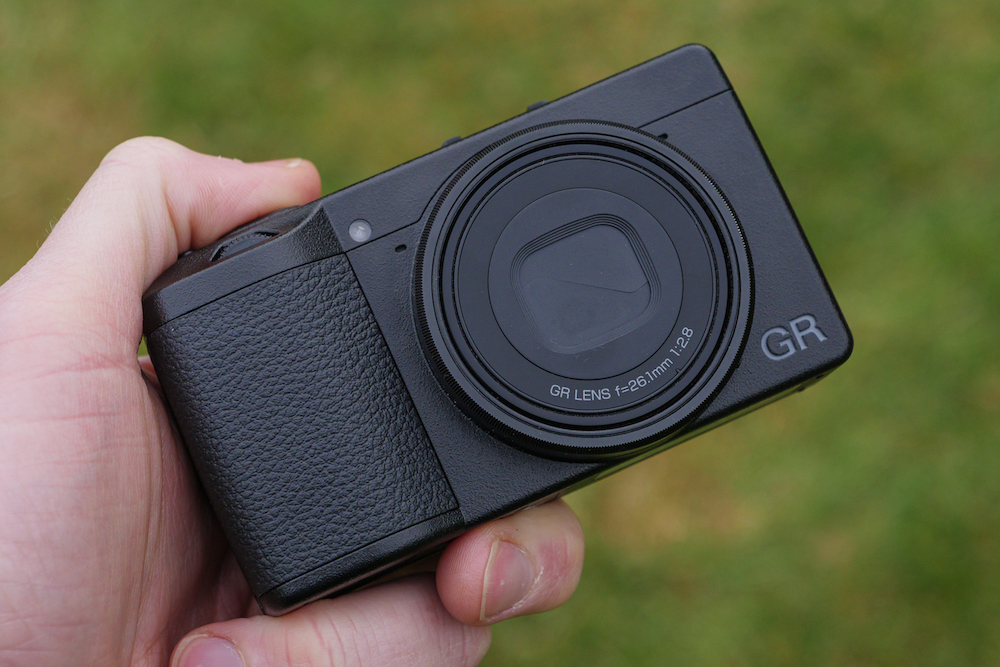
Amateur Photographer verdict
The Ricoh GRIIIx finds a nice niche between the better smartphone and bigger “proper” cameras that will please serious photographers for its image quality and useability.- Fast, reactive focusing
- 3-axis stabilisation
- Useful all-purpose focal length
- Quite a niche proposition
Specifications at a glance:
| Lens | 26.1mm f/2.8 (40mm equivalent) |
| Sensor | 24.2MP APS-C CMOS |
| Continuous shooting | 20fps shooting |
| ISO | ISO 100-102,400 |
| Touchscreen | 3-inch, 1.04m-dot, fixed |
| Video | Full HD |
The Ricoh GR IIIx, like the Fujifilm X100V, has an APS-C CMOS Sensor; impressive considering the compact size of the camera. It features a 26.1mm f/2.8 lens, equivalent to 40mm (in 35mm terms), and the camera has a clever ‘Snap’ focus system so you can quickly get shots without any delay from focusing, making it another great street camera.
The Ricoh GR IIIx is the latest digital iteration of the cult classic Ricoh GR film camera, and is designed to be a pocketable camera (weighing just 262g) that you can take anywhere. There’s also built-in sensor-shift shake reduction, which moves the 24MP sensor on 3-axis to counter any shake.
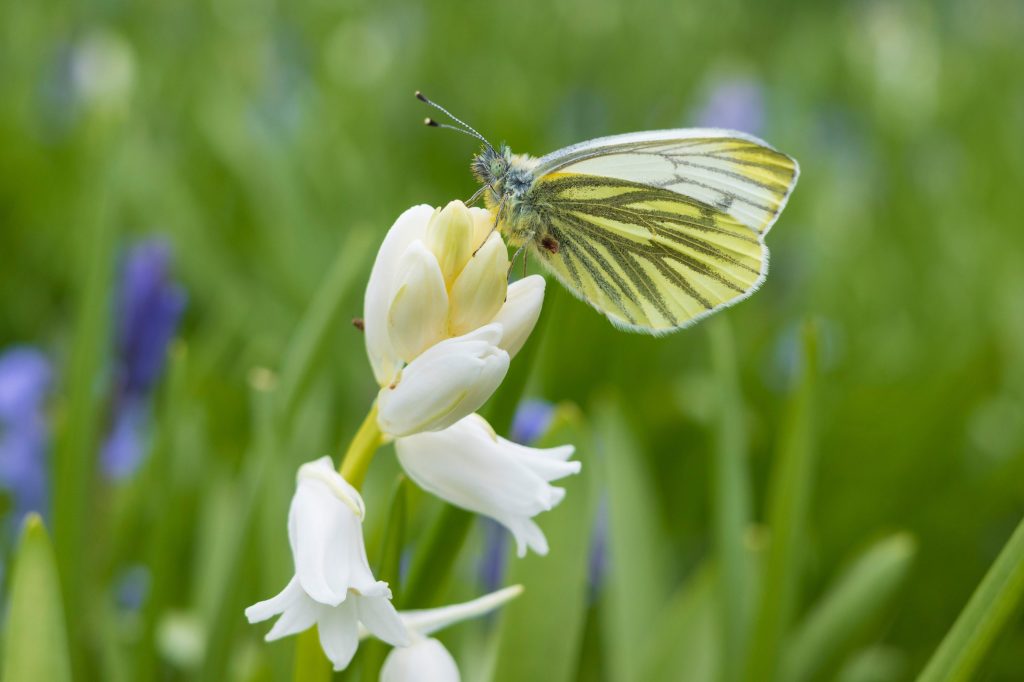
There’s a 3-inch touch-screen on the back, and you’ll find dual command dials making it easier to change settings quickly. The GR IIIx handles really well. It has a rapid sub-one-second start up time, quick shutter response, comfortable single-handed operation and intuitive controls.
The Ricoh GR IIIx is a well positioned niche alternative to smartphones and big cameras, offering a wonderful mix of the two. There’s enough in it for smartphone users considering a ‘real’ camera, and experienced photographers who want a ‘proper’ photographic tool in their pocket. But, first and foremost, it needs to deliver excellent image quality in any kind of light… and the GR IIIx achieves this thanks to the combination of its 24MP APS-C sensor, DNG raw capture and sharp 40mm f/2.8 lens.
Best premium compact
Best premium compact: Leica Q3

Amateur Photographer verdict
Yes, it’s expensive – that’s Leica. But for the discerning photographer with deep pockets, the Leica Q3 is a dream of a camera. It’s lovely to use and produces downright gorgeous images.- Superb raw image quality
- Highly capable autofocus
- Robust built with dial-led controls
- Excellent viewfinder
- Screen tilting, not articulating
- JPEG colours a little flat
Specifications at a glance:
| Lens | 28mm f/1.7 optically stabilised |
| Sensor | 60.3MP full-frame |
| Continuous shooting | Up to 15 fps shooting |
| ISO | ISO 50-100,000 |
| Viewfinder | 5.76m-dot, 0.76x |
| Touchscreen | 3in, 1.84m-dot tilting |
| Video | 8K 30p; 4K 60p; Full HD 120p |
An utterly superb performer, the full-frame Leica Q3 is in a league of its own. With 60.3MP of resolution on offer, it produces images of absolutely dazzling quality, aided by the optically stabilised 28mm f/1.7 lens mounted to its front. As on the Leica M11, the Q3’s sensor is a triple-resolution type, with the option to shoot at 36MP or 18MP in JPEG or raw if card space becomes a higher priority than detail.
While the Leica Q3 offers that supple Leica manual focusing action, its autofocus is also first-rate – much improved from previous generations of the Q compacts, with phase-detection and subject-recognition delivering impressive speed and accuracy. Present and correct are the dial-based controls, which make the camera feel perfect in handling. It’s every bit the premium photographic experience you would expect (demand, even) when paying $6,295 / £5,400 for the privilege.

With a wide ISO range spanning from 50 to 100,000, the Leica S3 is capable of getting clean, sharp images even in challenging low-light situations. There’s also the new intelligent Dynamic Range (iDR) option, which boosts shadow detail in high-contrast lighting situations, as well as Perspective Control for fixing converging verticals.
A more capable compact than ever, the Leica Q3 is a premium camera capable of producing dazzling results. Also, if you prefer a tighter field of view, Leica has also recently released the Leica Q3 43, which sports a 43mm lens.
Read our full, in-depth Leica Q3 review for more.
Best waterproof camera
Best waterproof camera: OM System Tough TG-7
Amateur Photographer verdict
For those that what an easy to use, but tough point-and-shoot camera, then the OM-System Tough TG-7 would make a great choice, particularly if you need something that can survive all environments- Tougher than a tank
- f/2 zoom lens
- Useful macro modes
- Small sensor
- Raw needed to get the best results
Specifications at a glance:
| Lens | 4x optical zoom lens; 25-100mm (35mm equivalent) |
| Sensor | 12MP 1/2.33inch BSI CMOS Sensor |
| Continuous shooting | 15 fps |
| ISO | ISO 50-100,000 |
| Viewfinder | 5.76m-dot, 0.76x |
| Touchscreen | 3in, 1.84m-dot tilting |
| Video | 4K |
| Waterproof | Waterproof down to 15m, shock-proof, crush-proof, freeze-proof |
Olympus has been making tough, waterproof, compact cameras for a very long time now, culminating in the OM System Tough TG-7, the 7th version of the premium waterproof camera.
Over the years it’s been refined with improvements to image quality, video recording, and strength. You’ll even find there’s a range of accessories available for this camera that can improve close up flash performance or add extra protection to the camera.
The camera uses a 12MP sensor along with an f/2.0 lens which gives it an edge over entry-level waterproof cameras, and will help with the low-light conditions you find underwater. Thanks to the folded optics used in the construction of the lens, the camera has an impressive level of macro performance letting you get detailed close-up shots.
4K video recording is included. Fans of macro photography will be impressed by the built-in focus stacking, and there are some manual controls available for when you’re shooting. This model also benefits from USB-C charging.
Read our Olympus / OM System Tough TG-7 review
BEST FOR STREAMING
Best for YouTube and streaming: Canon PowerShot G7X Mark III
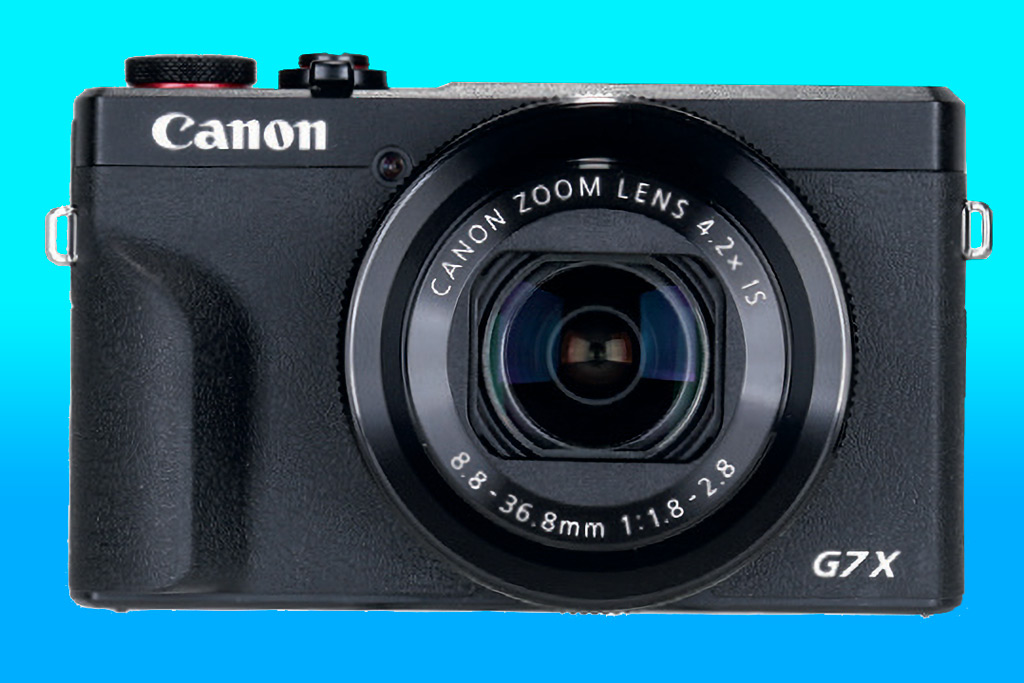
Amateur Photographer verdict
The Canon PowerShot G7X Mark III is a lovely pocket camera that produces great results and has some impressive video features.- Very good image quality
- Vlogger-friendly features
- Feels premium
- No viewfinder
Specifications at a glance:
| Lens | 24-100mm equivalent, f/1.8-2.8 lens |
| Sensor | 20.1MP, 1-inch CMOS sensor |
| Screen | 3in, 1.04-million-dot tiltable touchscreen LCD |
| Continuous shooting | 20fps burst, 8.3fps with AF |
| ISO | 125-12,800 |
| Image stabilisation | 4 stops lens shift-type |
| Video | 4K 30p, FullHD 60p |
Canon’s PowerShot G7 X Mark II was an unexpected hit with YouTubers, with its combination of a high-quality 1-inch sensor and 24-100mm equivalent lens providing everything in one handy setup. The Mark III version is fundamentally the same camera, but with uncropped 4K UHD video, a 3.5mm mic jack, and the ability to livestream directly to YouTube. High demand for it has followed accordingly.
Photographers may be put off by the lack of a viewfinder; vloggers and YouTubers, less so. The 180-degree tilting LCD screen is very useful for selfies and self-taping, while the defined grip also makes the camera more comfortable to hold than its slim dimensions might indicate. The metal control ring around the lens is also comfortable to use, giving the G7 X Mark III a premium feel.

Image quality is excellent in stills as well as video – it may be a vlogging camera first, but the G7 X Mark III is no slouch for photographers. For hybrid content creators who want a lightweight camera that does a bit of everything, the G7 X Mark III might just be it.
Read our Canon PowerShot G7X Mark III review
BEST FOR LOW LIGHT
Best compact for low light: Panasonic Lumix LX100 II
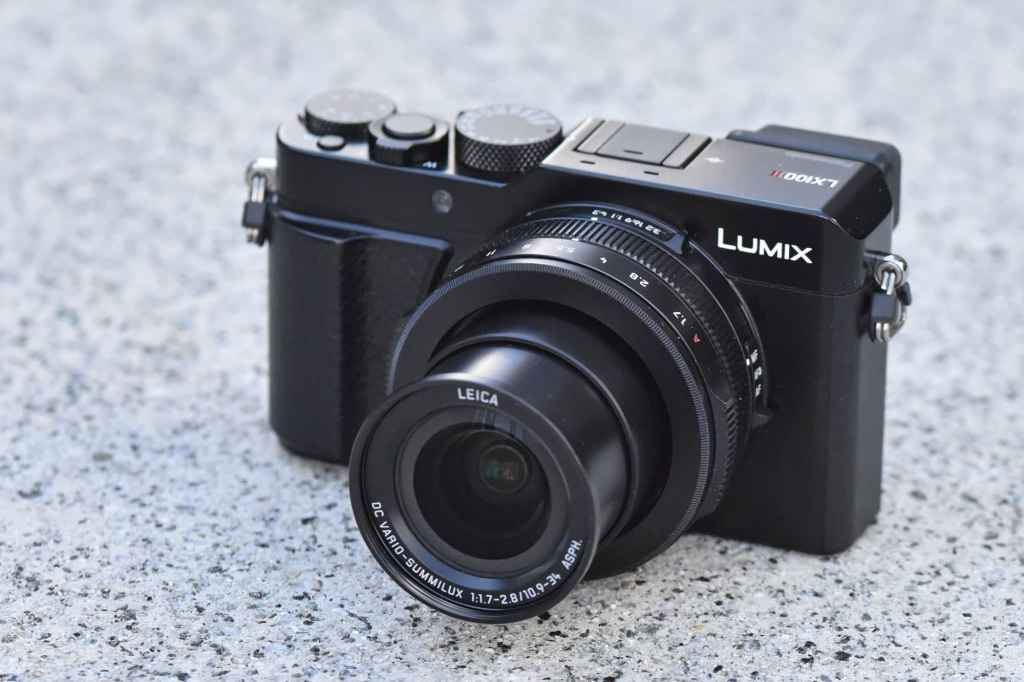
Amateur Photographer verdict
Analogue dials, effective image stabilisation and a unique multi aspect ratio sensor makes will appeal to enthusiast photographers looking for a small camera that isn’t just a point and shoot- Premium metallic construction
- High-quality f/1.7 lens
- Multi-aspect sensor
- Fixed touchscreen
Specifications at a glance:
| Lens | 24-75mm equivalent lens, f/1.7-2.8 |
| Sensor | 17MP Four Thirds CMOS sensor |
| Screen | 3-inch, 1.28M dot touchscreen |
| Continuous shooting | 11fps (5.5fps with AF-C) |
| ISO | 100-25,600 (extended) |
| Video | 4K30p |
The Panasonic Lumix LX100 II offers a multi-aspect ratio sensor, based on a Four Thirds sensor, and combined with a bright f/1.7-2.8 zoom lens with optical image stabilisation, you get a camera that can perform well in low-light shooting situations.
There’s a 3-inch touchscreen, but unfortunately, this doesn’t tilt. You’ll also find a high-resolution electronic viewfinder (EVF) with 2.76m dots.
The metal-bodied camera benefits from a number of external controls and switches, and this makes it a great tactile camera to use, letting you set different settings even when the camera is switched off.
As you would expect with a premium camera, you can record 4K video, and the camera has built-in Wi-Fi so you can transfer images to your smartphone, as well as control it remotely. Despite coming out back in 2018, the Panasonic Lumix LX100 II remains a very versatile and easy-to-carry travel companion.
Read our Panasonic Lumix LX100 II Long Term Review
BEST TRAVEL COMPACT
Best premium travel compact: Sony Cyber-shot RX100 VI
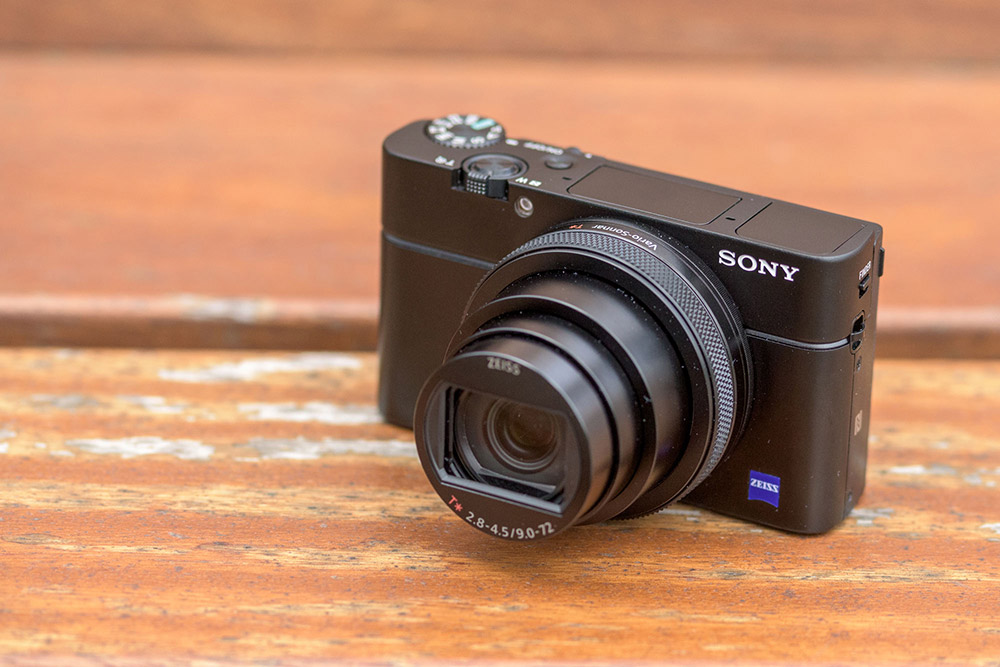
Amateur Photographer verdict
An incredible feat of engineering for such a compact form: equivalent 24-200mm zoom, built-in viewfinder, 24 fps at full resolution, and 4K video. But it frustrates too, and remains relatively pricey.- High-quality 24-200 zoom lens
- Slim and pocketable
- Price has come down
- Controls are fiddly and awkward
- Battery life isn’t the best
Specifications at a glance:
| Lens | 24-200mm equivalent, f/2.8-4.5 lens |
| Sensor | 20MP 1inch BSI CMOS sensor |
| Viewfinder | Pop-up electronic viewfinder |
| Continuous shooting | 24fps |
| ISO | ISO 125-12,800 |
| Video | 4K 25p |
If you liked the look of the Sony Cyber-shot RX100 VII in our top spot but it’s beyond your budget, consider its predecessor. The Sony Cyber-shot RX100 VI is a highly capable pocketable compact that offers basically the same shooting fundamentals as the Mark VII, pairing a 20MP 1-inch sensor with a 24-200mm equivalent zoom lens, for a flexible little shooter that’s great for travel.
The RX100 VI reliably captures sharp images throughout its entire zoom range, and the snappy autofocus system helps the user keep up a very good hit rate. Like a lot of RX100 cameras, it’s a fiddly thing to use and the automated exposure system is excellent; you could fumble with settings if you wanted to, but will probably fare better by leaving the camera to it.
This may seem a strange thing to say about a camera that is hovering around the £1,000 / $1,000 mark, but the RX100 VI really does produce sublime images. It’s just not a super-tactile experience for those who like to be more involved in the shooting process – for that, you’re probably better off with something like the Fujifilm X100V, featured further on in this guide.
Read our Sony Cyber-shot RX100 VI review
BEST COMPACT ZOOM
Best compact zoom: Leica D-Lux 8
Amateur Photographer verdict
Traditional control dials, and a multi aspect ratio sensor make the D-Lux 8 a joy to use and create with. Its JPEGs can be dull; best results are obtained from raw.- Unique multi-aspect ratio sensor
- Large aperture zoom lens
- User-friendly DNG-format raw recording
- Improved viewfinder over predecessor
- Uninspiring JPEG colour
- Non-tilting rear screen
- Minimal handgrip
Specifications at a glance:
| Lens | 24-75mm equivalent f/1.7-2.8 lens with OIS |
| Sensor | 17MP Four Thirds multi aspect-ratio sensor |
| Screen | 3in, 1.84m-dot LCD touchscreen |
| Continuous shooting | 11fps |
| ISO | ISO 100-25,000 |
| Video | 4K 30p |
| Viewfinder | OLED 2.36m-dot, 0.74x |
The D-Lux 8 is a new offering from Leica (launched July 2024 in the UK) that supersedes the D-Lux 7. It is an improvement on this; not least in its new viewfinder. The zoom lens provides a good level of compositional flexibility, and our reviewer really appreciated the ability to change aspect ratios via a switch on the lens.
Leica have employed a smaller Four Thirds type sensor with a clever multi-aspect ratio design, joined by a 24-75mm equivalent zoom with a bright f/1.7-2.8 aperture. It compares in price with the X100VI, at $1,595 / £1,450 vs $1,599 / £1,600. With traditional photographer-friendly controls for the main exposure settings, and a corner-mounted viewfinder in a flat-bodied ‘rangefinder-style’ design, it is a joyous thing to use.

Its 20MP Four Thirds sensor is used in a unique way. It never uses the entire sensor area to create images, but instead crops in to offer a range of aspect ratios with the same diagonal angle of view.
Read our full review of the Leica D-Lux 8.
Best used travel zoom
Best used travel zoom: Panasonic Lumix TZ90 / ZS70
Amateur Photographer verdict
With its extensive zoom and super compact size the TZ90 is an excellent holiday companion- Great feature-set
- Fits in a pocket
- Beefy zoom range
- Small sensor reduces low light performance
Specifications at a glance:
| Lens | 24-720mm equivalent lens, 30x optical zoom |
| Sensor | 20.3MP, 1/2.3-inch size sensor |
| Screen | 3-inch, 1040k-dot touch-sensitive LCD screen, tilts 180° |
| Viewfinder | 0.2-inch, 1,166k-dot, 0.46x magnification |
| Continuous shooting | 10fps AF-S, 5fps AF-C |
| ISO | ISO 80-6400 |
| Video | 4K 30p |
Panasonic’s travel zoom compact builds on the successes of all that came before it. It features a 30x optical zoom, but in return for that large zoom range, you need to accept a smaller sensor than its one-inch comrade, the TZ100.
This is still among the most well-featured superzoom compacts on the market. As well as the huge zoom, you get an in-built viewfinder (albeit small), 4K video shooting, a touch-sensitive screen, manual controls, raw format shooting and a body which just about fits in your pocket.
A great choice for those looking for something to take on their travels, in low light it suffers by comparison to its larger sensor rivals. If you’re mainly going to be using it on your sunny holidays, you shouldn’t worry too much about that.
The Panasonic Lumix TZ90 was updated by the TZ95 / TZ95D with a slightly larger EVF and the addition of Bluetooth, but the TZ90 remains excellent value for money.
Read our Panasonic TZ90 vs Panasonic TZ100 comparison
BEST ALL-ROUNDER
Best all-rounder: Panasonic Lumix TZ100 / ZS100
Amateur Photographer verdict
If you’re looking for a small camera to take on holiday this summer instead of a DSLR, then without question, the TZ100 should be right at the top of your shortlist.- Pocketable form factor
- Useful zoom range
- Small EVF
- Fixed rear screen
Specifications at a glance:
| Lens | 10x optical zoom lens, 25-250mm equivalent |
| Sensor | 20.1MP sensor |
| Screen | 3-inch, rear LCD screen |
| Continuous shooting | 50fps (electronic shutter) 10fps (mechanical shutter) |
| ISO | ISO 125-25,600 (extended) |
| Video | 4K 25p, Fullm HD 50p |
| Image stabilisation | 5-axis image stabilisation |
This is getting harder to source, so check second-hand markets for availability before getting too excited.
In most cases, compacts which feature a larger (one-inch) sensor, have a restricted zoom. However, Panasonic’s TZ100 manages to bridge the gap between premium compacts and superzooms, with its 10x optical zoom offering.
While 10x doesn’t get near the heady heights of the 30x or 40x zooms elsewhere in this list, the 25-250mm equivalent should be more than enough for most situations. Alongside this, there’s a rich feature list which includes 4K video shooting, 10fps shooting, built-in WiFi and an electronic viewfinder.
The main drawback is a rather small electronic viewfinder, though it does offer a 1.16-million-dot resolution, but a 3-inch rear LCD with touch sensitivity helps with the handling. The screen is fixed, which is a shame when composing from awkward angles, but it did perhaps help to keep the overall size of the camera down.
Overall, this is a very likeable camera and it’s probably the best compromise of all the cameras here – you get a bit of everything for your cash, and the price isn’t outrageously high either. Image quality is very good, and while it’s not going to match your DSLR, the fact that you can fit it into your pocket makes it particularly appealing as a travel camera.
Read our Panasonic Lumix DMC-TZ100 review
BEST FOR VLOGGING
Best compact for video and vlogging: Sony ZV-1
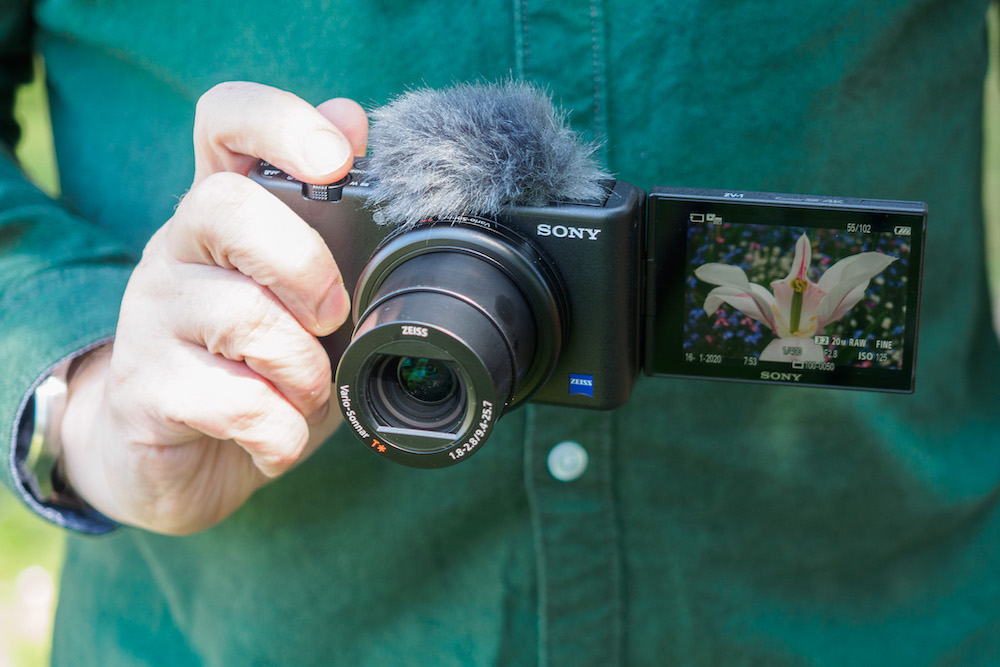
Amateur Photographer verdict
The ZV-1 is packed with vlogger-friendly features, but with its fully articulated screen it will also appeal to stills shooters too- Vlog-friendly feature set
- Fully articulated screen
- Comes with wind muffler
- No viewfinder
Specifications at a glance:
| Lens | 25-70mm equivalent lens, f/1.8-2.8 |
| Sensor | 20.1MP 1-inch BSI CMOS sensor |
| Screen | 3-inch, fully articulated touchscreen |
| Continuous shooting | 24fps |
| ISO | 125-12,800 (extendable to ISO 64) |
| Video | 4K 25p |
The Sony ZV-1 has been specifically designed to be an excellent compact camera for vlogging and video recording, and thanks to a 1-inch sensor, a high quality lens, and some video friendly features, it delivers the goods.
It features 4K video recording and specific video features to make vlogging even easier, with a ‘Product Showcase’ mode, as well as a Background Defocus switch. You’ll find a multi-direction microphone on top, which is provided with a ‘deadcat’ that’s designed to reduce wind noise, and a screen that can be turned around for vlogging and selfies.
Although it’s clearly aimed at vloggers, the Sony ZV-1 has one feature that will endear it to serious photographers: the rare delight of a fully articulated screen on a pocket camera. This is something you’ll usually only find on larger SLR-styled bodies, like the Canon G5 X and G1 X Mark III, which stretch the definition of ‘pocketable’ – possibly your pocket itself.
If you want to use an external microphone you can, as there’s a microphone socket on the side, as well as HDMI output. Overall, the ZV-1 is a really interesting little camera that takes RX100-series technology and gives it a video-centric twist. Its vlogging features generally work well, and appear cleverly targeted to its intended audience.
If you’re looking for a vlogging camera with an ultra-wide-angle zoom, have a look at the new Sony ZV-1 Mark II.
BEST COMPACT ABOUT $100
Best budget camera around $100: Kodak PixPro FZ45

Amateur Photographer verdict
For $99 the Kodak PixPro FZ45 is one of the cheapest new cameras available, and if you do want something better, then you’ll need to look at the used market.- Easy to use
- Includes a real flash
- Cheap
- Uses AA batteries
- Image quality won’t match other cameras
- MicroUSB connection
Specifications at a glance:
| Lens | 4x optical zoom, f/3.0-6.6, 27-108mm equivalent |
| Sensor | 16MP 1/2.3inch CMOS sensor |
| Screen | 2.7inch |
| Continuous shooting | 5fps |
| ISO | ISO 100-3200 |
| Video | FullHD 30p |
| Battery | 2x AA batteries |
* This has just undergone a $29 price increase in the USA.
The Kodak PixPro FZ45 is one of the cheapest compact cameras available from a main brand! It may surprise you to see that Kodak are still making digital cameras, but it’s actually made under licence by another company. This doesn’t really matter too much except for the fact that you actually get a reasonably good camera, particularly for around $100 / £100.
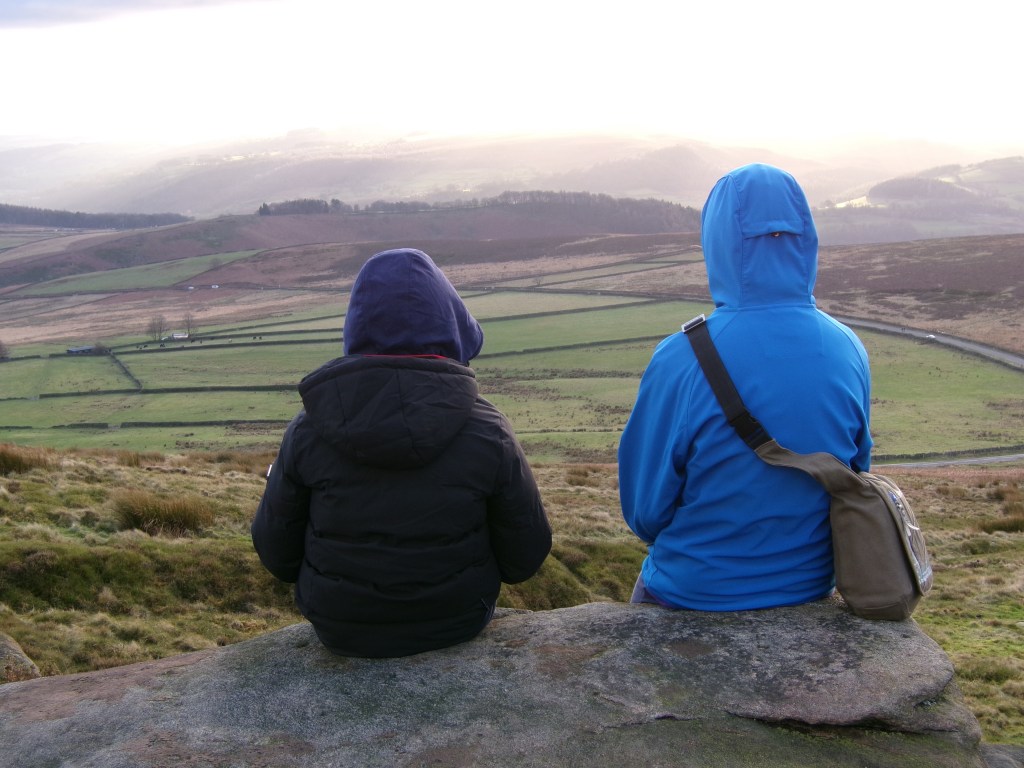
The camera is very easy to use, fits in your pocket, and takes AA batteries. When I used this camera, I was particularly impressed by the built-in flash, which helped with low-light shooting, as well as the battery life which seemed to last for ages when using the provided alkaline batteries.
It’s available in a number of colours, with black, white and red options available, giving you something a bit more interesting than all the black cameras out there.
Read our Kodak PixPro FZ45 review. JW.
How to choose the best compact camera
In this guide, we’ve avoided comparing images pixel by pixel (if you want to see that sort of detail, check out our camera reviews). That said, we’ve come a long way since the simple point-and-shoot camera, and there are some key specs worth considering picking your compact camera. Here are the important things to keep in mind…
The sensor size and resolution will have a big effect on the final look of your image. With compacts, you’re generally dealing with sensors in 3-4 sizes. From smallest to largest, they are: 1/2.3-inch, 1-inch, Micro Four Thirds, and APS-C. A larger sensor is generally better in terms of image quality, allowing for greater tonality and dynamic range. However, they cost more, and require larger cameras to house.
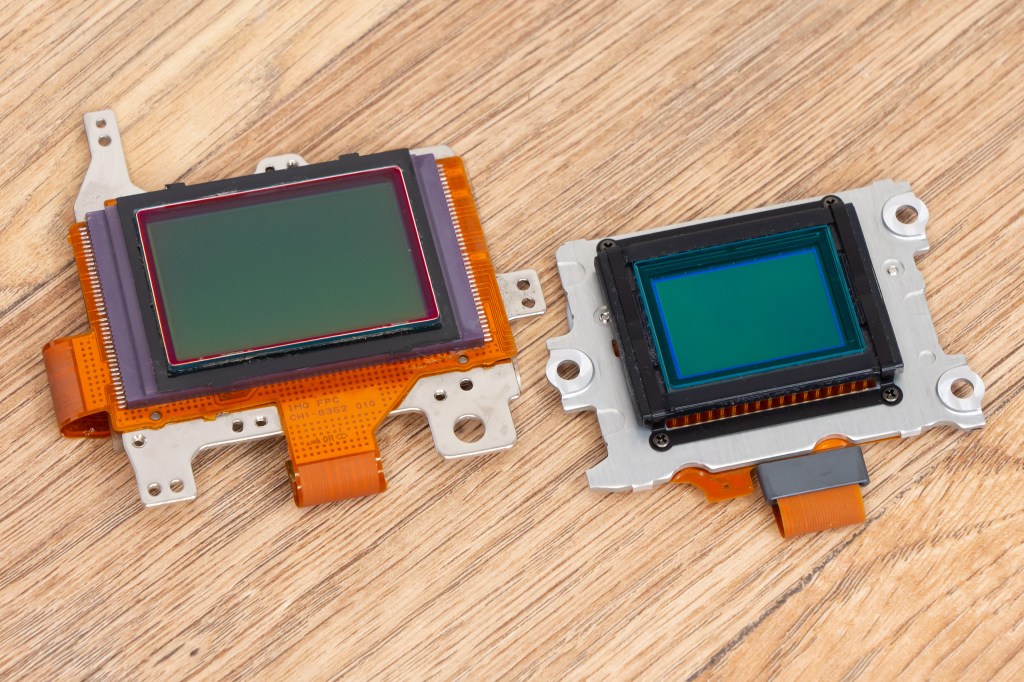
Resolution, measured in megapixels (MP), refers to the level of detail in an image. More megapixels mean you can print images in higher quality, and crop more, but it can incur more image noise, reducing quality in low light.
The other half of a compact camera is, of course, the lens. The focal range will determine how much you can zoom in and out. Big zooms will naturally give you more versatility, but it tends to come at a cost of optical quality.
Indeed, some compacts like Fujifilm’s fabulous X100V don’t zoom at all, being equipped with a high-quality prime lens. These produce sublime images, but if you want to get close to a subject, you need to move your feet.
Other features are worth considering. Want to shoot fast action? Check how many frames per second the camera can manage. Think you’ll be working in low light? A higher ISO range is your best bet. If you want to shoot video as well as stills, check the video resolution and frame rate.
Is a compact camera better than a phone?
The short answer to this is yes: a compact camera can produce better images than a smartphone. However, in reality it depends on all the factors discussed above. If you buy a budget camera, with a small sensor 1/2.3-inch sensor, then the image quality could easily be equal to or worse than that of a premium phone, particularly if you just look at it on a screen. Modern smartphones do a lot of processing trickery on the images they produce, and while this may not hold up to printing, it’s certainly good enough for Instagram.

However, images benefit from compact cameras with a larger sensor (1-inch, APS-C or larger). A compact camera can also field a much larger and more sophisticated lens than a smartphone, which offers a number of advantages. It might provide a large optical zoom range, which even the most sophisticated smartphones still can’t match. Or, it might be a prime lens that provides dazzling sharpness and detail, as well as an aperture that can be opened wide to produce a shallow depth of field — a sharp subject and an artfully blurred background (a.k.a. the effect that the Portrait Mode on your smartphone is trying to simulate).
Smartphones will always win out in terms of sheer convenience. However, compact cameras offer a number of hardware advantages and should not be counted out. Check out our detailed article on the differences between a digital camera and a phone to see all the details, as well as the pros and cons of each system.
What are the disadvantages of a compact camera?
Compact cameras do not suit all photographers and videographers, and it’s worth being fully aware of what you’re getting into before you buy one. That means familiarising yourself with the disadvantages of compacts as well as the advantages.
The defining attribute of a compact camera is its fixed lens. The lens that your compact camera fields out of the box is fixed in place and cannot be changed. If your compact has a focal range of 28-70mm, then 28-70mm is what you’ve got to work with until you buy a different camera. That’s it. So, naturally, if you discover that you enjoy sports or wildlife photography after buying this compact, for either of which you’d typically need a significantly longer focal length, then your only real option is to trade it in for a new model.
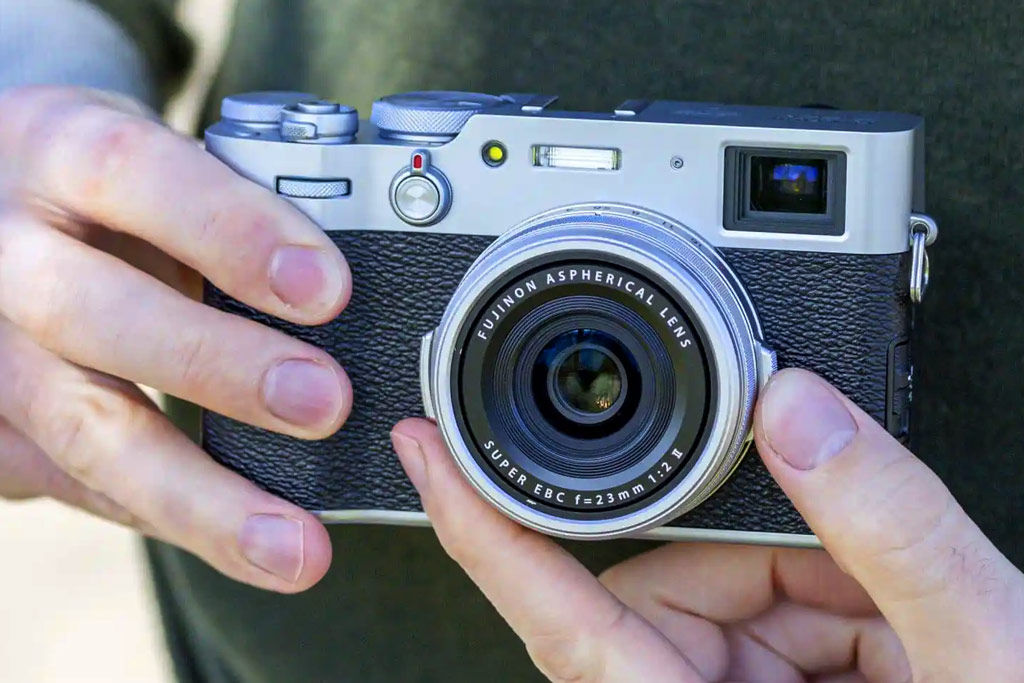
This also touches on another potential downside — compacts can’t really be upgraded and augmented the way system cameras can. If you buy an entry-level or mid-range DSLR, you can keep adding new lenses as you grow into learning how to use it — and when it comes time to get a more advanced camera, you’ll likely be able to keep using most of these lenses (particularly if you keep the same sensor size). Compacts don’t offer an upgrade path in the same way.
Compact cameras also on average have smaller sensors than interchangeable-lens cameras (i.e. mirrorless and DSLRs). All of the compact cameras on our list above have sensors ranging between 1/2.3-inch, 1-inch, Four Thirds and APS-C — none are full-frame. Smaller sensors will perform worse in low light, with greater digital noise at higher sensitivities. Larger full-frame sensors offer a number of key benefits, and while all the other sensor sizes listed can produce excellent images, there is a gap. See our rundown of full-frame vs APS-C for more detail.
If you want a larger full-frame sensor and the benefits it brings, you’re realistically going to have to opt for a mirrorless camera or DSLR. Yes, there are some full-frame compacts out there, such as Leica’s Q series. However, these tend to be prohibitively expensive and are therefore really only of interest to niche hobbyists (or, y’know, rich people) rather than general shooters.
Compact cameras can be brilliant for portability, convenience, style and value for money. But it pays to be aware of their limitations, too.
How we test compact cameras
We test compact cameras primarily by using them to take photographs and video in a wide range of real-world situations. We evaluate their control layouts and handling, and the usability of their viewfinders and screens. We assess their autofocus across a range of different subjects and shooting scenarios and check their continuous shooting capabilities.
We also examine the effectiveness of their image stabilisation systems, when included. Last but by no means least, we critically evaluate the image quality, in both JPEG and raw (when available), including resolution, high-ISO noise, and dynamic range. We then take all these factors into account, along with such things as portability, when giving our final conclusion and score. You’ll find the full breakdown of how each compact camera has performed in our full reviews.
We hope that’s been helpful to you when choosing your next compact camera. Have a look at more buying guides here, and if you’re looking for cheaper options have a look at our guide to classic compact cameras, as well as vintage digital cameras.


